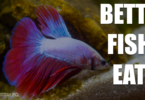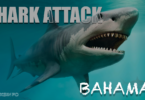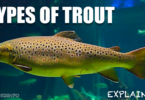Echinoidea, commonly known as the Sea Urchins are one of the widely spread invertebrates in the entire globe. It is an aquatic animal often found in the depths of the ocean. They come in tons of different sizes and shapes. Sea Urchins are usually small in size as their size varies between 5 to 10 cm. There are more than 1,000 species of Sea Urchins around the globe. Earlier in the day, it was also considered somehow related to the hedgehog. The Urchin word was actually derived from the old name of the hedgehog.
Echinoidea: Sea Urchin 7 Unknown Facts
These are 7 facts regarding Sea Urchins that you might not know yet.

Fact 1: Invertebrates Without Bones
Sea Urchin is one of the invertebrates with no bones in their body. The shell we might often consider a bone structure is not actually a bone. Rather, it is classified as a test, calcium carbonate acts as the main source in the development of this structure. It is made up of several small pieces that collectively are connected to make a single test.

One special fact about these boneless creatures is that their test is a piece of art regarding symmetry. If we take a look at their test without any spikes, an astonishing symmetry, dividing its body into 5 equal sections can be seen throughout the whole structure.
Fact 2: The Spikey Legs
Sea Urchins are known for their spikes and they have almost every kind of these spikes. These spikes can be small, pointy, soft, sharp, or dull based on the type of Sea Urchin. These incredible numbers of spines are designed as a defense system for this beautiful creature. Also, Sea Urchins use them to travel across the Sea/ocean bed. (They move quite slowly).

Despite these spikes, they are unable to save themselves from some of the predators such as crabs, otters, some fishes, and Us (The Humans).
Not So Fun Fact: Sea Urchin Gonads are considered a delicacy in Japan and are classified as expensive food items(up to 100$ or more per 200g). It is used in sushi and also consumed raw.
Fact 3: Sea Urchin Can See
Sea Urchins don’t possess any visible eyes on their whole body. But they are still able to navigate around without any assistance. They use tubed feet (which are quite similar to tentacles), which have light-sensitive cells in them. This allows them to easily navigate and see around without having a proper set of eyes.
Fact 4: Sea Urchins are Everywhere
Sea Urchins are widely available in every ocean of the world. They can be found near the beach shores or in the depth of the dark ocean. Some of these Sea Urchins are found even below 5,000 meters. Also, there has been a spike in the Sea Urchin population over the last few years. The main reason is the reduction of the species including Sea Stars(due to overfarming and hunting) that prey upon these Sea spikes. It now results in a massive increase in the population of these spiky creatures all over the Sea.
Fact 5: Sea Urchins Can Get Sick
A lot of people have a misconception about Sea Urchins that they are not exactly living organisms(which is certainly not true). This makes them not consider the fact that they can also get sick. Several diseases can happen to a Sea Urchin like any other living being. Bacterial infections are one of the common reasons for Sea Urchin sickness.

A common bacterial disease is known as Bald Sea Urchin Disease. The most prominent symptom of this disease is the loss of the spikes from the whole body of a Sea Urchin. It left them open for other creatures to prey upon them without worrying about the danger of spikes.
Fact 6: The Flower Sea Urchin is a Deceiver
The Flower Sea Urchin is one of the most beautiful types of Sea Urchin out there. It is one of the largest kinds and is found in the tropical Indo-West Pacific, Indonesia, and Philippines water bodies.

While being a beautiful creature, it is actually a smart deceiver. The reason is that it is one of the most venomous Sea Urchin you can find anywhere in the world. Their tube feet(not the spikes) allow themselves into derbies of different ocean materials like corals and some other ones. It makes them hide in plain sight, making it even more dangerous.
A Flower Sea Urchin uses flower-shaped suction parts to inject the poison into any predator that approaches it. If a person touches the Sea Urchin, it injects the person with venom using its flower-shaped suction parts with snappers inside. This poison can leave a person paralyzed and even lead to death.
Fact 7: The Humble Eater
In terms of the selection of food, Sea Urchin is a humble eater. It only eats algae but can sometimes eat some slow-moving organisms such as sessile and other related living beings,

Sea Urchin has a small mouth underneath their body, at the center. It has 5 teets, which combined are often known as the Aristotle Lantern. Sea Urchin uses these teets to scrape its food such as algae from nearby surfaces. These teeth-like structures are also used to create a depression on any nearby rock, where the Sea Urchin can live.
Bonus Fact: The Urchin Barren Region
As we know in recent years, the Sea Urchin population has exploded. Now this creates a huge issue of underwater places that almost lost their ecosystems. Sea Urchins while eating algae consume the kelp holdfast completely. It will result in the devastation of those kelp biomes, which allows a variety of other species to live in that biome.

These barren regions are filled with more of these Sea Urchins later on, as they can easily multiply them. It causes the inhibition of vegetation growth around, which leaves it with nothing but Sea Urchins, like a barren land with lots of unusable space.
Conclusion
Sea Urchins are fascinating aquatic creatures. Being found everywhere around the world, they are known for their spiky bodies. Their distinctive appearance makes humans even more intrigued by this amazing creature. Learning about their unusual spikes, Aristotle Lantern, and other facts, helps you to understand the marine line in a better way. It also helps to create an interest in Sea life in people, who do not know about it. In short, these facts are an easy way to understand the anatomy, behavior, nature, and habitat of Sea Urchins.







